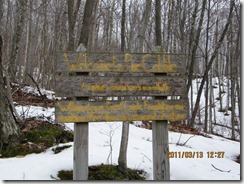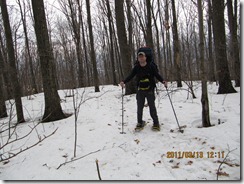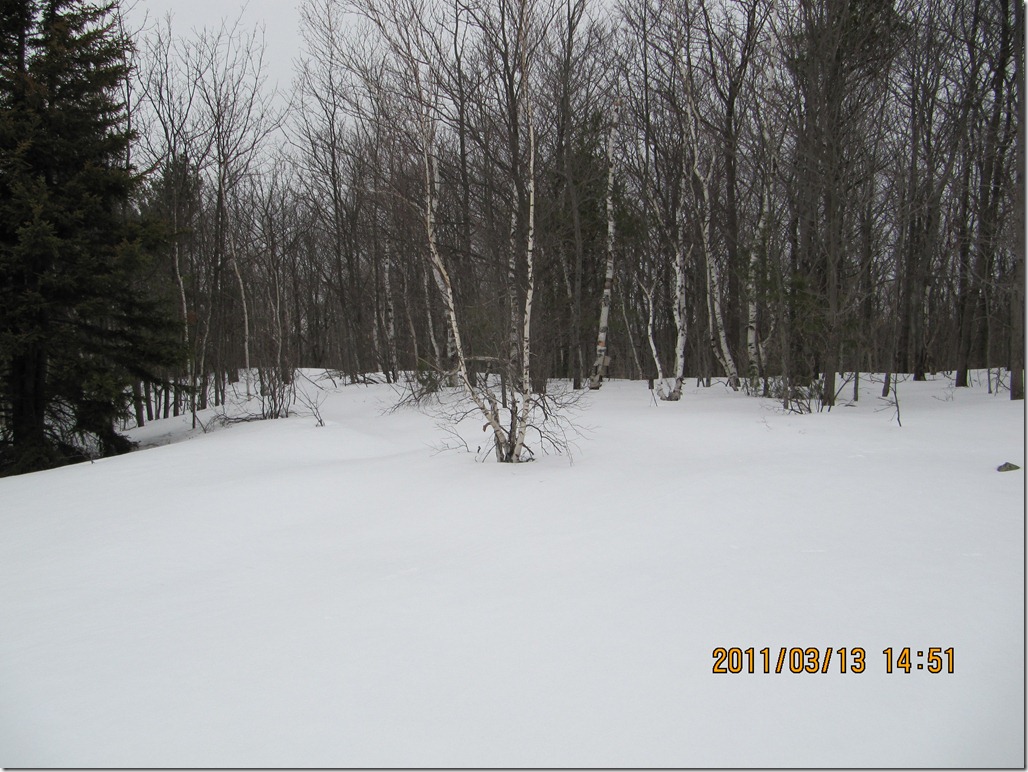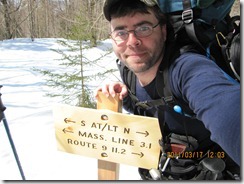The Long Sections
So I've wanted to hike the Long Trail in Vermont since I was a kid. it is the oldest long distance hiking trail in the United States, spanning 272 miles from the southern Vermont border in Massachusetts to the northern border of Canada. It is reported that most thru hikers take 20+ days to do the whole thing when doing it in one trip. Most people who have completed the full length have done it in sections…. as I will. Mostly because we have to get back to work to pay for new hiking boots.
So I did the first 10 miles of hiking this past March, starting at the southern end of the trail. At the time there was 2 feet of snow on the ground and 28-35°F during the trip. I’d gone out and purchased quite a bit of equipment for winter hiking to accommodate my already filled closet full of hiking crap to allow me to survive in these conditions.
It really didn’t take too much to adapt to this environment. Most of my summer gear worked well in winter. I took the necessary step of wearing only non-cotton clothing. I took extra pairs of just about everything, but realized at half way that I had not needed to bring that much. During the trip, there was a predicted severe weather storm wa3ning for the third day of my hiking. therefore I’d planned coming off trail for that day. On that day, I dropped nearly half the weight from my gear by ditching extra clothes, my water purifier, 3/4 food, and anything else that I’d not used in the last few days.
The best thing I’d brought with me was the pair of MSR snowshoes purchased from BLAH. These things are awesome in any level of snow. Occasionally, the tailbacks will cross and trip you up, but this is common on all shoes, and is basically a matter of practice to reduce. it was amazing to step out of the shoes and into the snow and sink up to my knees! They basically let you fly across deep snow.
 Another thing I’d purchased, didn’t need, but had fun testing was these little fire starter blocks. They basically look like white ice cubes, and work like solid napalm! I actually built a fire directly on the snow pack by gathering punky tree bark, and arranging it like a blanket for the fire to be built on. then I gathered tinder and larger fuel, ready to feed when things got going. You arrange the tinder for nice air flow, then take one of the cubes out of its bag, and shave a good bit of it onto the wood, placing the rest of the block onto the middle. All it takes to light this little fire bomb is a spark, so you can use a flint to light it. woosh. up like magic it goes!
Another thing I’d purchased, didn’t need, but had fun testing was these little fire starter blocks. They basically look like white ice cubes, and work like solid napalm! I actually built a fire directly on the snow pack by gathering punky tree bark, and arranging it like a blanket for the fire to be built on. then I gathered tinder and larger fuel, ready to feed when things got going. You arrange the tinder for nice air flow, then take one of the cubes out of its bag, and shave a good bit of it onto the wood, placing the rest of the block onto the middle. All it takes to light this little fire bomb is a spark, so you can use a flint to light it. woosh. up like magic it goes!
The trip went ok, but I had to get used to the fact that I would always be lost. The reason being that with the white snow, you never knew where the trail was since all signs of a trail are under 2’ of snow, nor could see the white blazes on the trees, since they were usually covered by patches of white snow, thus disguising the blazes.
Look at this photo and try to find the trail:
Therefore, I spent the first two days constantly looking for the trail, instead of making progress. Then on the middle of the third day, I said to hell with it and just headed out using the compass and the topo map as my guide. It actually was quite freeing. Normally in the summer/spring/fall I am a stickler for staying on the trail so you don’t cause damage. However, since I’m traveling at 2’ above the trail, there is no damage to walking off route! Very cool experience to just head off for a known feature in the landscape, hill, stream, road, etc. and not worry about the route so much. Eventually I made my way to the destination I’d planned, and everything turned out alright. This means you have to be pretty confident in your ability to navigate, so losing a compass could be difficult ![]()
I already have done the next leg of the trail, 40mi from Bennington to Manchester Center, but that is for the next post…
your friend and mine, Herrick Spencer



